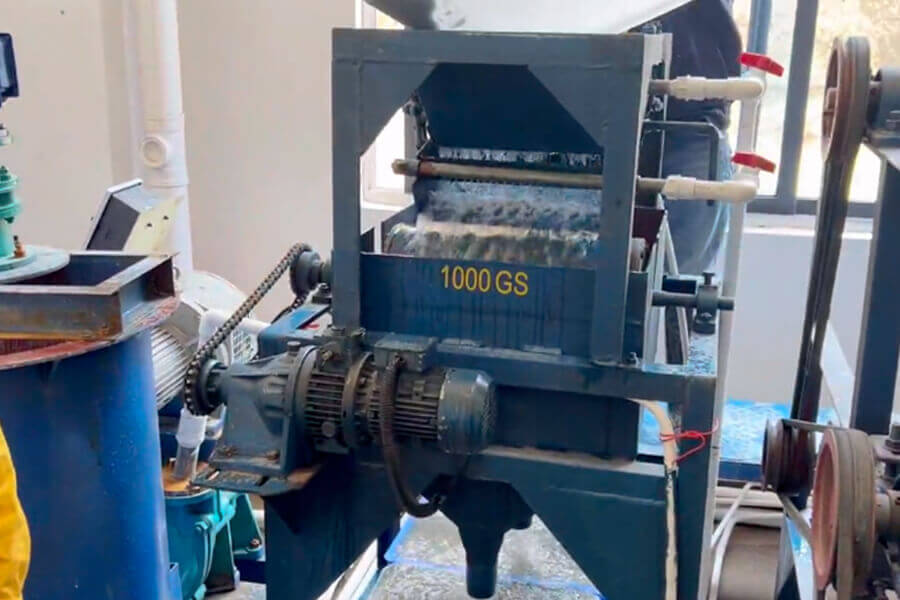Titanium is an extremely valuable metal with numerous industrial applications such as aerospace manufacturing, medical implants and even in the production of golf clubs. However, extracting titanium from the ore can be a complex and expensive process due to the mineral’s strong chemical bonds.
As demand for titanium continues to rise, scientists are exploring new ways to increase the efficiency of mineral processing. With a better understanding of titanium ore’s chemical composition and physical properties, processing techniques can be optimized to increase efficiency and reduce waste.
We offer titanium ore testing services to determine optimal conditions for processing titanium ore, reducing waste and increasing efficiency. By analyzing various parameters such as particle size distribution and mineral composition, we are able to provide customized solutions resulting in more efficient processing techniques.

Lab Titanium Ore Testing
The beneficiation process of titanium ore is usually crushing, grinding, gravity separation and magnetic separation. The main equipment includes ball mill, spiral chute, weak magnetic separator, and strong magnetic separator to produce high-quality titanium products with the least pollutants. To ensure the quality and efficiency of this process, laboratory testing of titanium ore samples contributes to the optimization of the concentrator process. The different stages of the testing flow include sample preparation, chemical analysis and mineral analysis, technological design, testing operation, data recording and analysis, optimal, adjustment process, summary lab report.
- Grinding
First pour the material into the ball mill, the material particle size is below 25mm, and add grinding steel balls. At this time, you can see that the ball mill will rotate continuously, and the grinding steel balls inside will grind the material into fine particles. In titanium ore beneficiation, the ball mill is mainly used to grind the material to make the finished product reach 0-1mm or finer.
- Gravity Separation
The slurry is pumped into the spiral chute, and there are minerals of different colors on the surface of the chute. The black material in the middle and the right are heavy minerals, and the left ones are light minerals, namely tailings. The spiral chute is a common gravity separation equipment, which uses gravity to separate materials with a certain density difference.
- Magnetic separation
- Weak magnetic separation: Pump the pulp into the weak magnetic separator. Its magnetic field strength can reach 1200 Gauss. There are 2 discharge ports. Among them, the selected strong magnetic minerals are mainly magnetic iron. On the other side is titanium concentrate. The weak magnetic separator has a strong adsorption effect on strong magnetic impurities, and the iron removal effect is very good.
- Strong magnetic separation: The titanium concentrate in the weak magnetic separator pumped into the strong magnetic separator, and its magnetic field strength can reach 8000-10000 gauss. The selected weak magnetic minerals are mainly titanium ore. On the other side are tailings. The strong magnetic separator is suitable for iron ore, silica sand, manganese ore and other ores. It can remove magnetic minerals of about 12000-15000 gauss and improve the grade of titanium ore.
Finally, the gravity separation method is suitable for coarse-grained and fine-grained concentrated disseminated titanium ore. After coarse and medium crushing, gravity separation equipment, such as spiral chute, shaker, etc., can discard a large amount of gangue and desliming. Titanium ore is a weak magnetic mineral, and ilmenite and gangue minerals can be effectively separated by strong magnetic separation. Combined magnetic separation-gravity separation method can obtain better indicators and reduce costs simultaneously.

Magnetic separation is widely used to separate minerals and ores according to their magnetic properties. It is commonly used for titanium ores to remove magnetic minerals such as ilmenite, magnetite and hematite from nonmagnetic minerals such as rutile and zircon. This process is essential to obtain high-quality titanium concentrates that can be further processed into various titanium products. Therefore, we highly recommend utilizing laboratory ore testing to optimize mining operations.
These tests aim to develop more efficient methods of extracting valuable minerals from titanium ore while minimizing environmental impact. Asia-Africa International engineer team of experts is constantly working to find new and innovative ways to improve the efficiency and effectiveness of titanium ore processing. From analyzing raw material quality to determining the best recovery method, accurately determining the quantity and quality of magnetic mineral content in ore samples, and saving time and resources in subsequent processing stages. Stay ahead of the curve by following our page for the latest discoveries in Lab mineral processing service.
